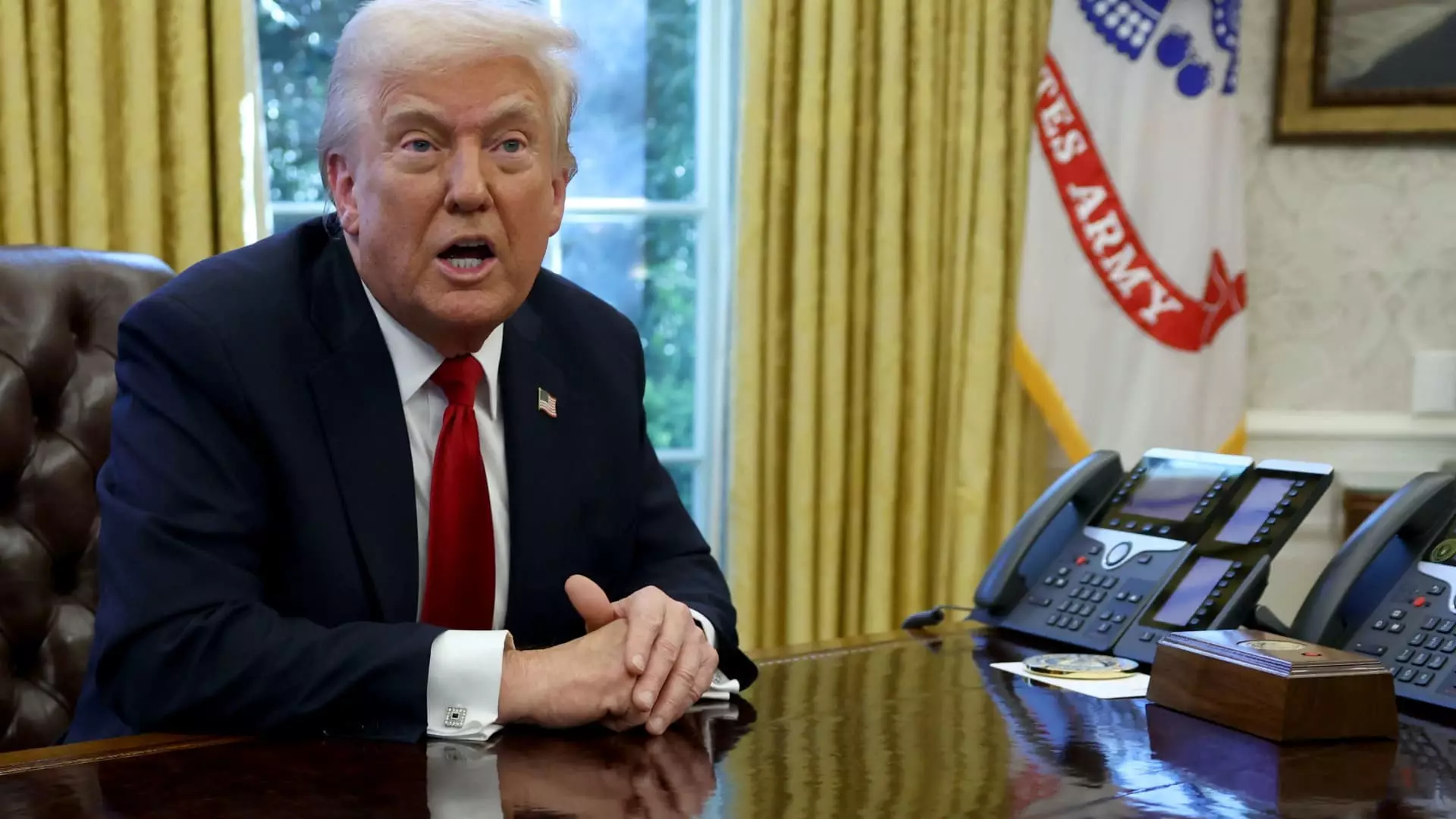As President Donald Trump takes another bold step with his announcement of a 25% tariff on all foreign-made cars, it becomes imperative to dissect the broader implications of such a move. This decision doesn’t merely serve as a blusterous proclamation; it is a strategic play that intertwines economic nationalism with the ambitious goals of American innovation and industry revitalization. With huge figures like Tesla CEO Elon Musk as an advisor, one wonders if this policy is genuinely beneficial or merely a maneuver designed to rally support from domestic auto manufacturers while further complicating an already intricate global supply chain.
Trump’s relationship with Musk represents an unusual fusion of governmental influence and corporate ambition, where the lines between adviser and entrepreneur blur. Although Trump claims Musk has not requested any favors, the inherent conflict of interest begs for scrutiny. For a nation striving to modernize its economy, it is vital to ask: does this partnership herald a new era of innovation, or will it wall off American consumers from the choices and advancements that international competition can offer?
The Impacts on Tesla and Beyond
While Trump remains optimistic about the potential positives of the tariffs—suggesting they could be “net neutral or even beneficial” for companies like Tesla—this sentiment starkly contrasts with the realities facing automakers. Tesla, despite its burgeoning status, is heavily reliant on a global supply chain. The company’s letters to the U.S. Trade Representative outline substantial concerns about the sourcing difficulties for critical components that remain elusive within U.S. borders. Tariffs might theoretically bolster American-made products in the short term, but they could stifle innovation, growth, and ultimately consumer choice in the long term.
The irony lies in Musk’s position as a peddler of electric vehicles, with Tesla’s expansion dependent on parts that might soon become exceedingly expensive due to these tariffs. A policy designed to protect domestic jobs could inadvertently harm Tesla’s profitability and competitiveness. With competition rising, chiefly from companies like BYD, which has yet to penetrate the U.S. market, the stakes for Tesla have shifted dramatically. Musk must navigate the fine line between aligning with Trump’s vision and ensuring that Tesla remains an industrial leader, effectively showcasing the complexity of these intertwined relationships.
A Potential Shift in Consumer Dynamics
The President’s tariffs may also contribute to a shift in consumer dynamics, wherein American buyers are left with fewer options and subsequently higher prices. A “buy American” ethos is commendable, but consumers rarely opt for patriotism over practicality, especially in economically challenging times. Should prices surge due to the tariffs, the resultant socioeconomic effects could ripple through middle-class America, unknowingly subverting the original intent of job protection.
Moreover, the government’s primary role in fostering innovation should not devolve into mere protectionism. It is the responsibility of policymakers to ensure competitiveness, particularly when American automakers are already contending with an aggressive influx of EV competitors. Limiting competition could lead to complacency in the industry, curtailing technological advancement when it is needed most.
The Future of Governmental Support for Innovation
Trump’s efforts to consolidate federal agencies, embodied in the Department of Government Efficiency (DOGE), ostensibly aim to streamline expenditures and enhance government capability to adapt. Yet, one must question whether this consolidation will facilitate true innovation or merely create bureaucratic bottlenecks. While slashing overhead costs is crucial, effectively supporting a vibrant, dynamic marketplace should take precedence.
If America truly desires to lead in the automotive revolution, particularly in electric vehicles, then it must prioritize an environment that fosters competition, support groundbreaking technologies, and attracts talent without sacrificing consumer rights or innovation potential. While tariffs aimed at protecting American industry may be sourced in good intentions, they risk backfiring if not executed with foresight and adaptability.
President Trump appears optimistic that his latest tariff strategy will bolster domestic manufacturers and create jobs, yet a clear-eyed analysis shows this could be a myopic view that ultimately stifles innovation and restricts consumer choice. Without a comprehensive understanding of the broader implications, both political leaders and corporate allies might find themselves on shaky ground as this automotive narrative unfolds.

